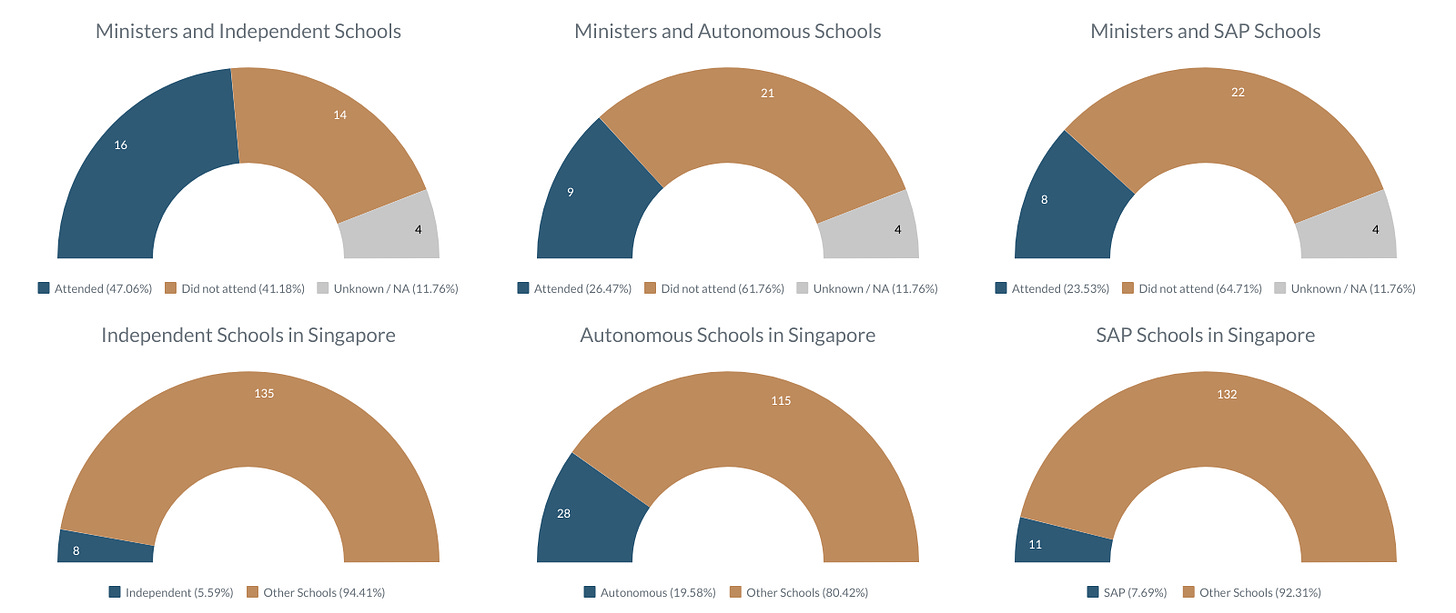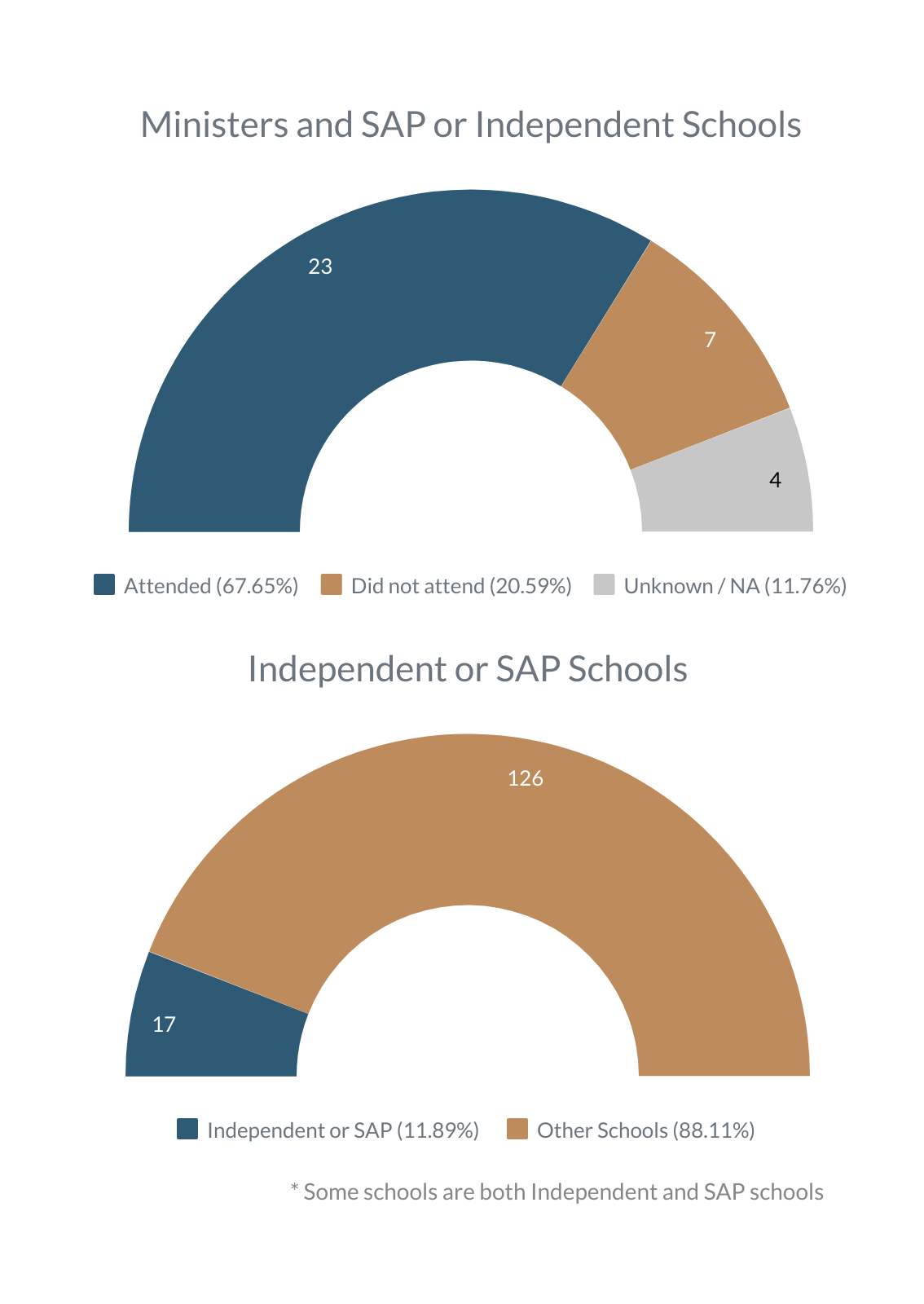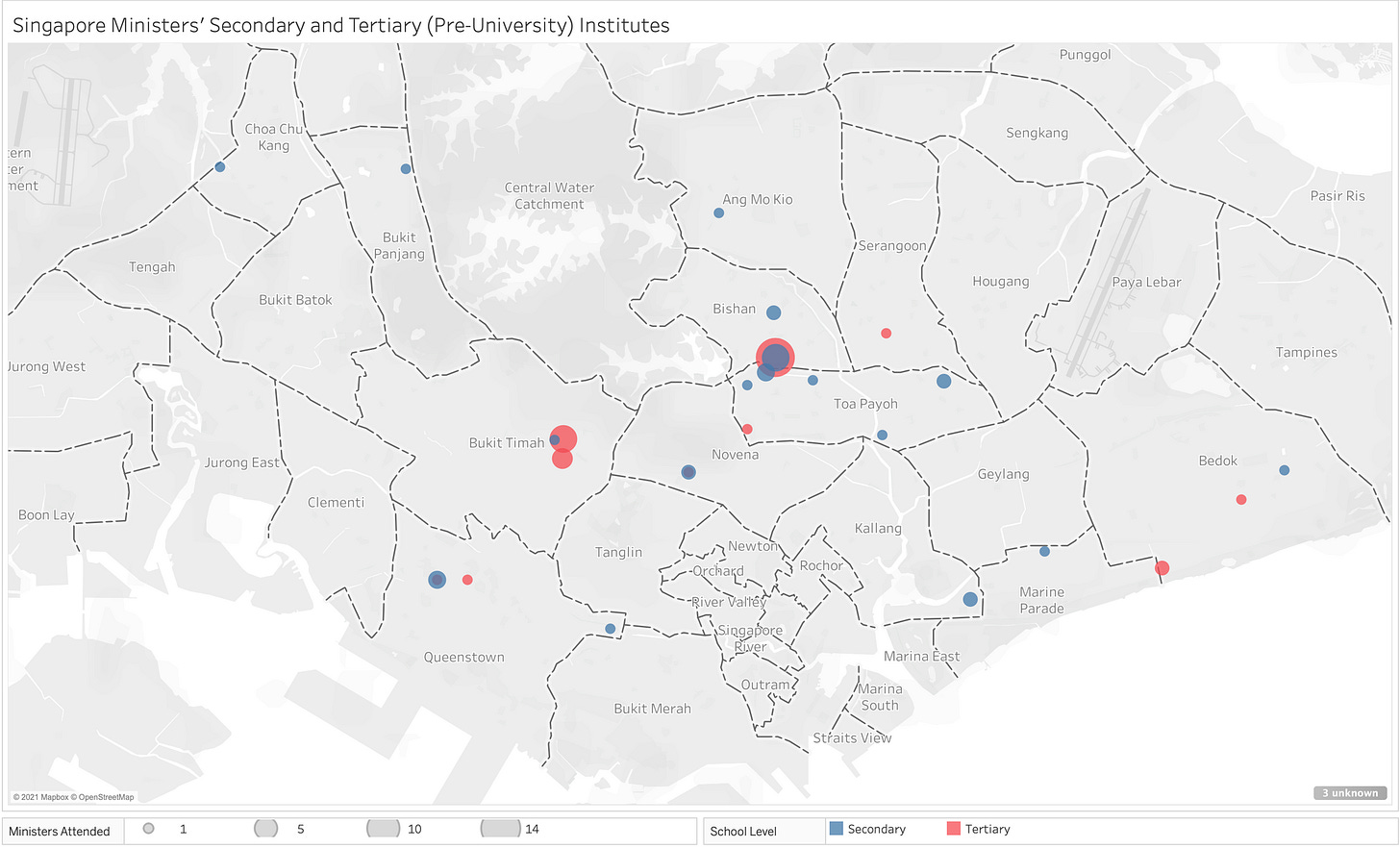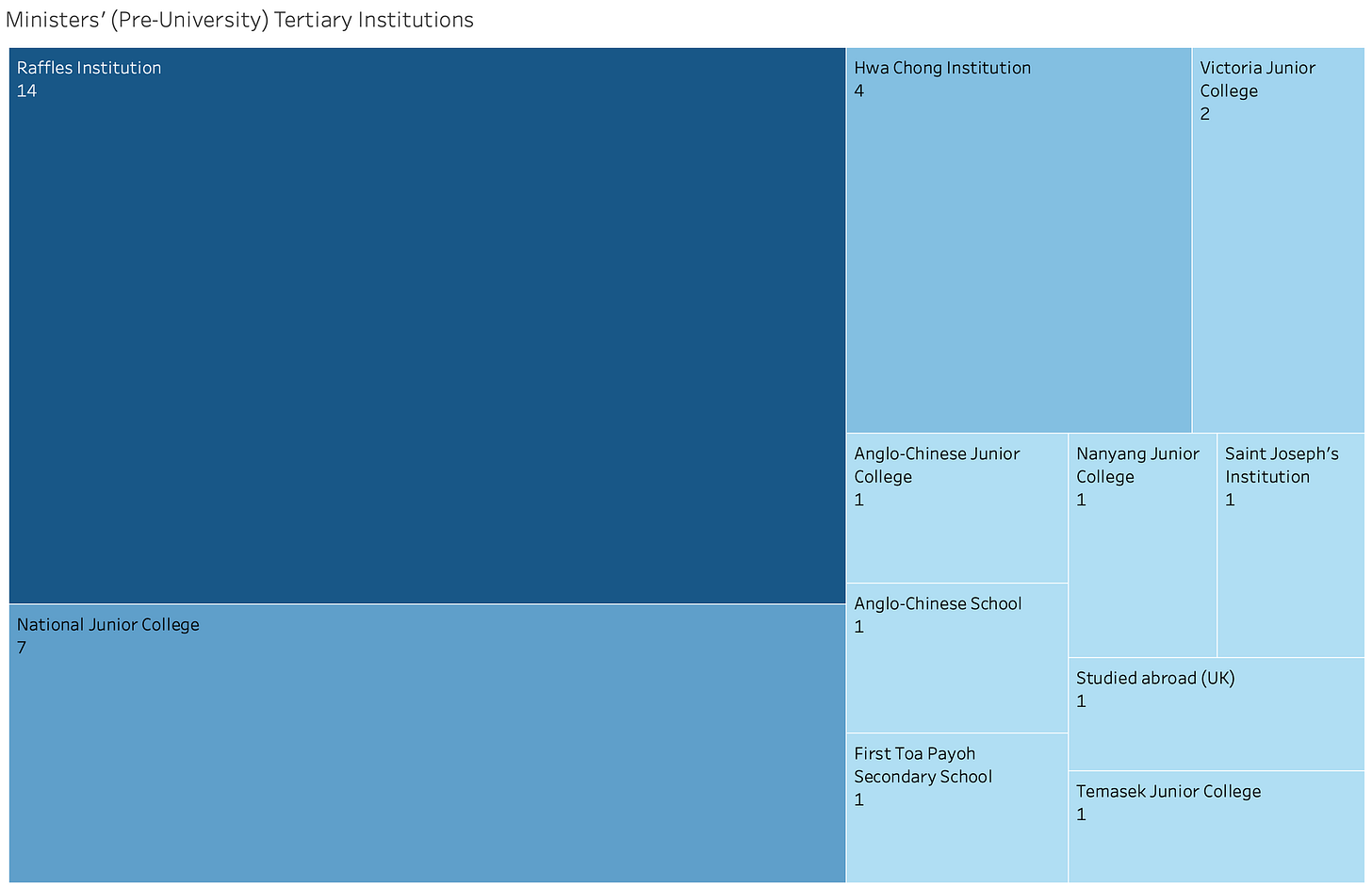 |
From secondary school to university, this issue illustrates the educational background of Singapore』s 34 ministers (as of 2021) in eight charts and figures.
|
 |
|
 |
In this issue:
How elite are the elite institutions of Singapore?
Which three junior colleges produced the majority of Singapore's ministers?
What is the most commonly studied degree subject among ministers — and what is the most uncommon?
How prevalent is an overseas education among ministers? And how many went to Oxbridge?
|
 |
The Elite Institutions of Singapore  Source on secondary school types: 2020 Secondary School Posting Booklet(which includes information on 143 secondary schools, but excludes schools for which S1 posting is not a part of the admissions process, i.e. Singapore Sports School). |
 |
While Independent and Special Assistance Programme (SAP) schools form a small minority of the secondary schools which exist in Singapore, a majority of ministers (23 out of 34) were educated in SAP or Independent schools.
|
 |
 Note that schools can be categorised under multiple categories (autonomous and SAP, independent and SAP).
|
 |
SAP schools have a distinct focus on bilingual education in English and Mandarin Chinese. As recently as 2019, the importance of SAP schools was again emphasised by then-Minister of Education Ong Ye Kung, who pointed to the growing importance of China and the Chinese language. However, criticism has been levelled at the programme for being ethnically-exclusive and elitist in nature, considering Singapore's large non-Chinese minority.
Independent schools "have the flexibility to set their own fees and develop their academic and non-academic programmes". For Singapore Citizens, the school fees amount to $300-$600/month, while the monthly school fee for government (including autonomous) schools amounts to $25-$43/month (with an additional fee for autonomous schools).
Based on 2020 Primary School Leaving Exams (PSLE) admission cut-off points, 6 out of 11 SAP schools were in the 20 options with the highest cut-off points. Meanwhile, all 8 independent schools were among the 20 options with the highest cut-off points.
|
 |
 Note: The most recent iterations of each minister's schools are used in this article.
|
 |
These elite institutions are not only more exclusive, they are also concentrated geographically: all Independent schools and all but two SAP schools (Nan Hua and Nan Chiau) are located in Central and South Singapore. A similar pattern can be seen in the schools attended by ministers.
Why does location matter? A study of 40 years of junior college yearbooks from 6 junior colleges indicated that a neighbourhood』s characteristics could potentially explain why some groups are under-represented in Singapore』s top junior colleges:
"We found that ethnicity and gender matter in different ways. For female students, attending an elite junior college in a wealthy neighborhood is associated with wealthy neighborhoods having a disproportionate number of elite girls』 secondary schools that feed enrollment into the junior colleges. By contrast, for Malays, not attending an elite junior college in a wealthy neighborhood has more to do with Malays being underrepresented in wealthy neighborhoods." (Chua, Swee & Wellman, 2019)
|
 |
Most Ministers attend one of three Junior Colleges  |